The Newsletter for Members of California State Parks Foundation



elcome back to the season of green.
This winter felt especially long, for a lot of reasons. Now, with the arrival of spring, there is much more hope and positivity on the horizon. Even California wildflowers are blooming in celebration.
Over the last few months at California State Parks Foundation, we’ve been both planning for the future and working to help parks that were severely damaged from wildfires last fall. We can’t thank you enough for supporting places such as Big Basin Redwoods State Park, Austin Creek State Recreation Area,
and Armstrong Redwoods State Natural Reserve when they needed it most. The stories, calls, emails, and sheer generosity were a testament to how much Californians like you value parks! Together, we’re helping them recover and are already seeing new growth among the redwoods.
We’re so grateful for your continued support and hope you have a few (safe) park adventures planned this spring. Here’s to regrowth, new blooms, and sunshine on our shoulders.


Greetings, park supporters –
As we emerge from a long and challenging year, a lot has changed. For many of us, adjusting to a new normal and moving forward with purpose have been essential goals.
Last fall, the Board of Directors of California State Parks Foundation adopted a new strategic plan to guide our work through 2023. As part of that process, we conducted membership surveys (thank you to those who gave input!) to understand attitudes about the state park system. Not surprisingly, we found that our long-standing mission of protecting and preserving California state parks remains a top priority.
As we have for the past 50 years, we will continue to protect and preserve state parks; however, as we look to the next half century, we are clearly defining how we accomplish that mission. Through conversations with our members, partners, and the parks community, we have worked to explain not just what we do, but also how we are accomplishing our goals.
Our goals for the next 50 years for parks:
• Enhancing visitor experience: Help visitors make lifelong connections to state parks by introducing them to meaningful experiences.
• Expanding access to parks: Ensure all Californians have equitable access to the positive impact parks have on health, happiness, and quality of life.
• Protecting wildlife and nature: Steward and preserve the native habitats of wildlife and plants in California state parks.
• Building climate resilient parks: Help California state parks prepare and adapt to the impacts of climate change.
• Preserving history and culture: Preserve and honor California’s historic sites and heritage through our state parks.
• Funding state parks: Fight for state parks to be adequately funded to fulfill their mission of providing for the health, inspiration, and education of Californians.
These new goals demonstrate clearly all the important ways California State Parks Foundation continues to fight to protect and preserve the parks we cherish. From inspiring stewardship and supporting resilience in parks to ensuring that maintenance and staffing is fully funded, together we can guarantee our parks thrive now and for future generations.
Until next time, please (safely) enjoy spring in our state parks!
Warmly,
As a member of California State Parks Foundation, you enable us to make amazing things happen for state parks. Thank you for being a trusted friend and partner! We couldn’t do this without your enduring support. These numbers reflect recent work you made possible:
8,618
volunteer hours were spent helping preserve and improve parks for visitors like you.
Rachel Norton Executive Director
$136,637
attendees joined our virtual Policy Forum, which brought together leaders in parks, policy, public health, climate resiliency, and youth access.
518 9,114
action alert responses were received asking legislators to support parks and protect public land.
$50,000 was awarded to park partners through the Wildfire Resiliency and Prevention Grant Round.
in immediate relief funds were provided to state parks impacted by wildfires
An exciting win was achieved through Assembly Bill 209 (Limón), which ensures that new pathways to the outdoors will be created for California’s youth through an educational grant program.
A new smoking ban on state parks and state beaches became law after Senate Bill 8 (Glazer) was signed, reducing cigarette litter that pollutes these lands.
After a long fight, San Onofre State Beach is now permanently protected from development! Assembly Bill 1426 (Boerner Horvath) ensures that no road infrastructure can be built that impacts the beach.
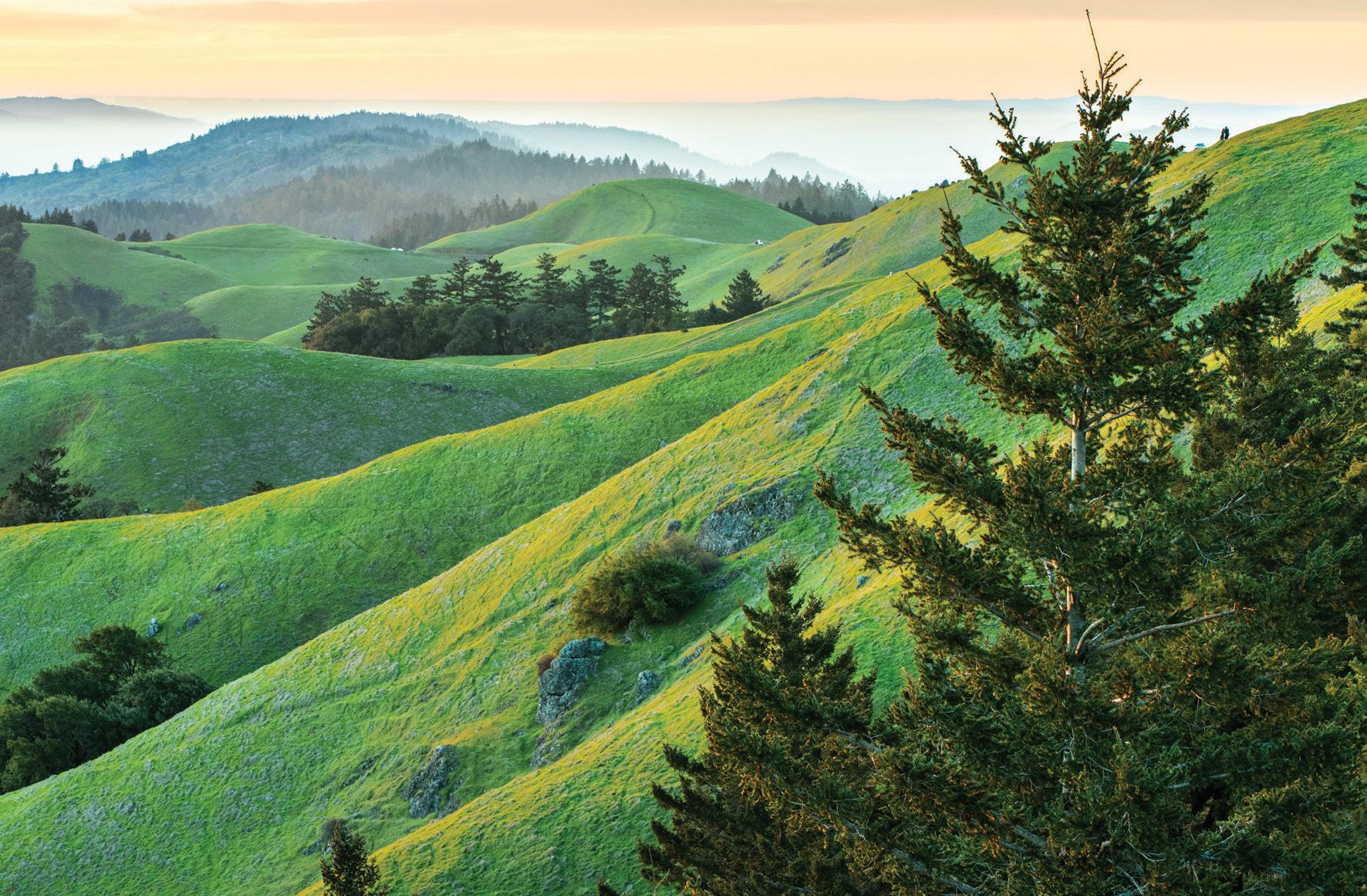
ast year’s wildfires burned over 4.18 million acres across California and over 115,000 acres in 22 state parks. After the fires were contained and it was safe to assess, we partnered with parks and nonprofits who were impacted by the fires. There was a critical need to restore fragile habitats and rebuild parks, and find additional ways to mitigate climate change to protect and preserve places most at risk.
We partnered on projects that will aid in prevention, assessment, recovery, and education. Our ongoing goal is to support activities in state parks that protect against and respond to the impacts of climate change that are jeopardizing these iconic places. We would like to thank Edison International for its generous donation to the wildfire fund of $100,000 and to the many other supporters like you who made this work possible!
These are a few of the park projects you helped establish through the Wildfire Resiliency and Prevention Fund:
ARTHUR B. RIPLEY DESERT
WOODLAND STATE PARK
Lake Fire, August-September 2020
Acres Burned in Fire: 31,089
Funding was granted to the Department of Parks and Recreation for this project, which will address the southern portion of the park that was significantly impacted by the Lake Fire. This includes 55 acres of burned area that was primarily Joshua tree habitat. The partnership will provide the resources necessary to rehabilitate degraded lands for the longevity of our Joshua tree/ juniper woodland habitat, which is already severely threatened by environmental changes.
Glass Fire, September-October 2020
Acres Burned in Fire: 67,484
This project will establish and prioritize the needs for post-fire land management in Sugarloaf Ridge State Park. Sonoma Ecology Center will create post-fire monitoring plots and soil monitoring sites throughout the park to better understand fire recovery and respond to soil loss and invasive plant spread in burned areas. A community science team will work with park volunteers and train a youth science team to conduct monthly monitoring at these sites.
Blue Ridge Fire, October-November 2020
Acres Burned in Fire: 13,964
The Blue Ridge Fire burned 62% of this park. Through a partnership with Hills For Everyone, this project will help restore the park’s campground entrance that was destroyed in the fire, creating a welcoming experience for park visitors again. In addition to restoring the entrance, signage will be rebuilt, native vegetation will be replanted, and trail fencing will be replaced. Replacement native plants include California buckwheat, white sage, bush sunflower, and fire-resistant prickly pear cactus.


n 2020, California was faced with a pandemic, massive budget cuts, and rampant wildfires – but that makes us as committed as ever to protecting the parks that offer us so much peace and joy.
This April, we hope you will join us in honoring our parks and planet by participating in Earth Day Climate Action. With the COVID-19 vaccine slowly being distributed across the country, we want to make sure everyone can participate in this impactful month, be it virtual or in-person.
For the first time in over 20 years of Earth Day events, we are downsizing our in-person volunteer events. Instead, we are calling on our vibrant community of passionate park champions across the state to go out into their own communities and make an impact there.
We are asking Californians to visit their local state parks, playgrounds, neighborhood parks, or even just their own backyards to pick up
trash. During this challenging time, we wanted to encourage stewardship of all our natural spaces, and give our community something tangible and positive to do while staying socially distant. Collectively, we can make a huge impact by cleaning up our own neighborhoods and local open spaces – and we will give you all the tools you need to do so! Go to calparks.org/earthday to register and receive your FREE Earth Day Climate Action kit.
Currently, we are still planning to host small-scale, in-person volunteer workday projects (outside, socially distanced, and masks required). These projects will focus on directly supporting parks by bolstering their climate resiliency, such as removing brush around buildings to reduce fire risk, maintaining trails to prevent erosion that could damage watersheds, removing invasive plants and planting native species, and more.
For the most up-to-date information, visit calparks.org/earthday.
California State Parks Foundation is continually blown away by the commitment of exceptional champions who have helped us protect and preserve parks through the years.
anisha Gupta may only be 14 years old, but she’s already a trailblazer for parks. In 2018, she and her family began volunteering with California State Parks Foundation to get outside and spend more time together in the places they love. Since then, she’s taken on even more responsibility as a volunteer Core Leader, helping run the workdays with help from her parents.
Tanisha loves to share the importance of why workdays matter, and she enthusiastically teaches volunteers how to perform tasks and use essential tools. It was only three years ago that she learned these skills herself, yet she’s already passing on the knowledge to newcomers.
Since Tanisha lives in Santa Clara, she volunteers most frequently at Half Moon Bay State Beach. Thanks to volunteer efforts in the park, she’s witnessed a visible difference in the landscape and enjoyed the fruits of her labor. “The improvements I’ve seen from planting new native plants and removing invasive species has been so great. Half Moon Bay is always going to have a special place in my heart because of leading volunteer workdays there – and I absolutely love the beach and the view from the dunes we work on,” she said.
Tanisha is also hoping to attract more young people like her to volunteer in parks. “Sometimes teenagers just don’t know that these places exist and need to hear about the opportunities from other teens,” she said. Along with a handful of other youth volunteer Core Leaders, Tanisha has formed a youth coalition within the volunteer program and is working to raise awareness of the places she holds dear.
Even outside of volunteer workdays, Tanisha brainstorms ways to improve parks and help the environment. For her middle school science fair project, she created a machine learning software that can detect invasive plants in a field. She came up with the idea shortly after she began volunteering with California State Parks Foundation, thinking it would be helpful to park rangers. Her project was a finalist in the competition, and she hopes to continue exploring projects in which natural sciences and computer science intersect.
Like many other park-goers out there, Tanisha enjoys unwinding by going on long hikes: “The serenity, calm, and peace of mind I’ve been able to find in parks is so important to me. Hiking gives me a chance to both clear my mind and have space for creative ideas. Some of my best ideas come to me when I’m hiking.”
To read Tanisha Gupta’s guest blog post about volunteering in state parks, visit calparks.org/whywevolunteer.
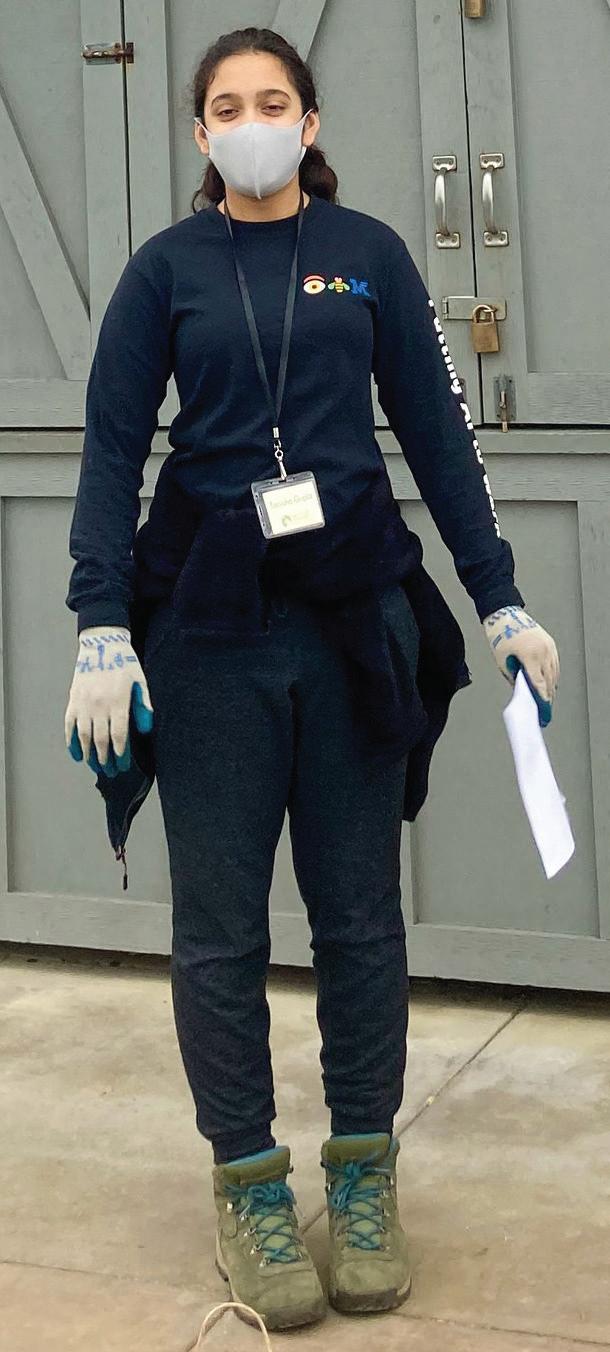
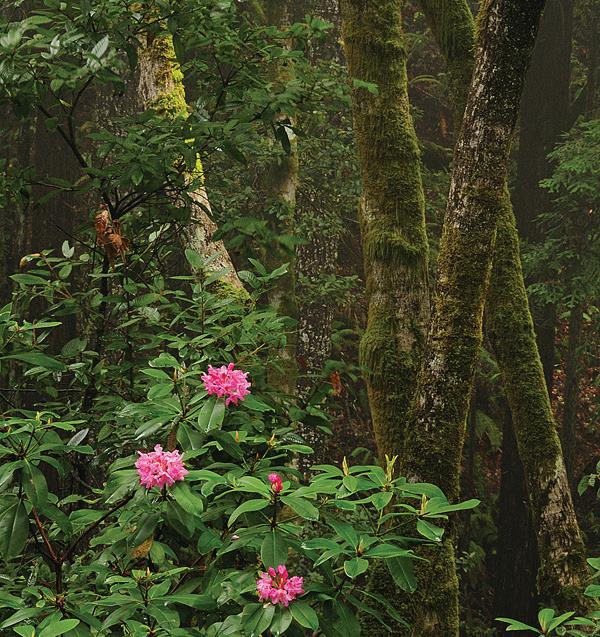

Originally built as a memorial for a father from his son, each May this reserve blooms into an extravagant display of pink rhododendrons that dot the vibrant green landscape. This park features an easy, flat trail suitable for visitors of all ages.
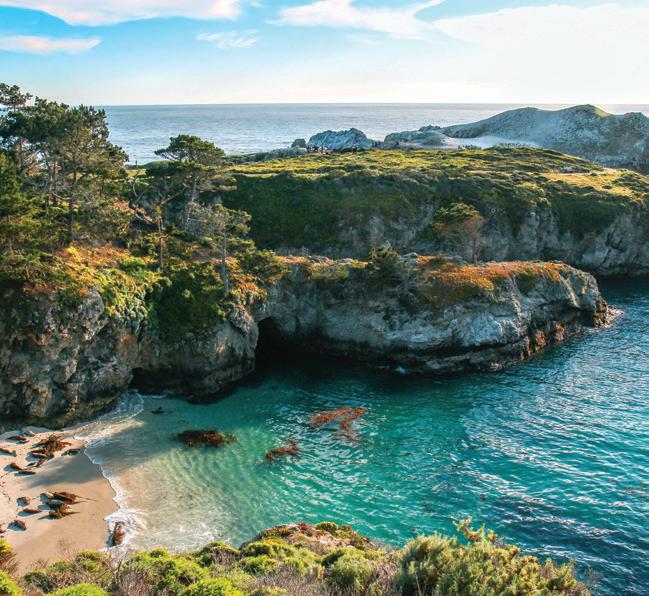

Situated on the idyllic California Central Coast, Point Lobos State Natural Reserve is the perfect place to visit for a springtime picnic. In addition to wildflowers, you can watch migrating gray whales as they make their way along the coastline.
This Bay Area icon is the perfect location for a day trip to check out seasonal wildflowers. As one of the most developed state parks, you can picnic, hike, mountain bike, and watch wildlife in one of California’s most popular locations.




Spring in Monterey County offers the opportunity to see over 2,000 varieties of wildflowers against a dramatic ocean backdrop at Garrapata State Park. California poppies, morning glories, purple iris, redwood sorrel, and many other species await your discovery.
s the weather begins to warm up and the rains pass, much of California explodes into a vibrant display of sights and smells. Take full advantage of our beautiful state this spring by visiting one of these state parks near you. As always, remember to take the necessary COVID-19 precautions to stay safe and healthy in the outdoors. For more information, check out calparks.org/covid.


Between Fresno and Madera counties lies “one of California’s greatest lakes.” Millerton Lake spans 40 miles of coastline for boating, hiking, camping, and fishing. When visiting, you’ll get great views and might even spot a bald eagle!
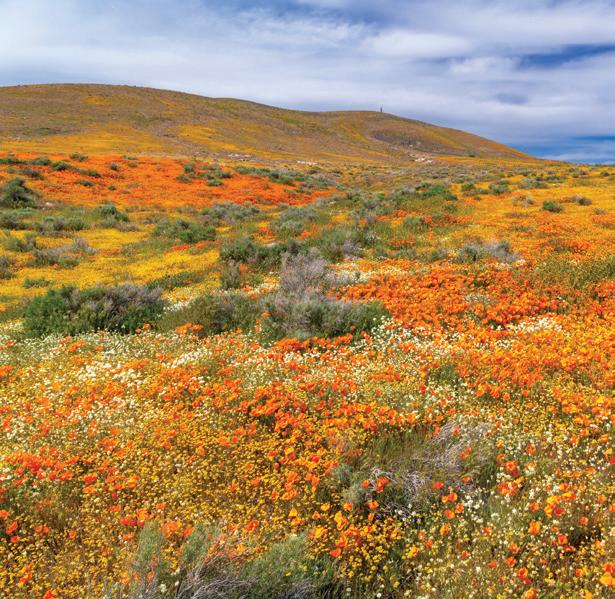

California
State Natural Reserve
An iconic California scene can be experienced at Antelope Valley California Poppy Reserve. The hills come alive with an orange blaze of our state flower during the spring, so make sure not to miss this stunning display if you live in Los Angeles County. This park also experiences large crowds, so please keep your distance and arrive early if you choose to visit.
n January, Governor Newsom released his proposed state budget for 2021-22. The record-breaking $227 billion budget outlines the governor’s funding priorities for the year ahead, including critical support for California’s state parks.
We are heartened to see the governor’s budget recognize the essential nature of our state parks. Governor Newsom’s proposed budget includes funding for critical initiatives to both support increased access to state parks and build climate resilience.
The governor’s budget puts significant focus on expanding park access with $82 million for the Advancing Parks for All initiative. This initiative includes:
$33.4 MILLION for Woolsey Fire restoration projects to restore destroyed facilities and trails
$20 MILLION to support deferred maintenance projects that improve access and enhance the visitor experience
$12.7 MILLION for the Youth Community Access Grant program that supports youth access with a focus on low-income and disadvantaged communities
$585 THOUSAND to continue the Community Liaison programs that engage underserved and underrepresented urban communities
California is considered one of the most climate-challenged regions in North America, and our ability to effectively mitigate and adapt to climate change will shape the future of our state. Addressing the damage caused by these wildfires may take years to address, adding to state parks’ existing $1 billion deferred maintenance needs and impacting Californians’ ability to access and enjoy these places.
Over the coming months, California’s state legislators will convene hearings on the state budget. By May 15, Governor Newsom will release a revised budget that reflects received tax collections and current economic forecasting. By June 15, the state legislature is required to pass a balanced budget.
$2.7 MILLION to support and improve public access to Candlestick Point State Recreation Area
The governor’s proposed budget outlines funding for climate adaptation measures, including a Wildfire and Forest Resilience Expenditure Plan. This plan provides $85 million to protect forests in state parks by increasing the pace and scale of forest management in California.
At every step of the way, California State Parks Foundation will be advocating for your state parks. We’ll need help from park supporters like you to ensure the final budget protects and preserves our state parks, so stay tuned!
BY MATTHEW TODD, VOLUNTEER CORE LEADER
ort Ord Dunes State Park edges up to Monterey Bay with walking and biking trails along picturesque rolling dunes and broad beaches. On a recent volunteer workday, cloudy skies overhead and surf pounding nearby, our local volunteers gathered to help restore and preserve the native and endangered flora and fauna.
The volunteer crew was made up of seasoned locals and fresh faces (all safely masked). Our task: pull invasive ice plant and block social trails.
Our volunteers at Fort Ord Dunes State Park worked to protect native species from two major antagonists: invasive species and people. Invasive plants compete with native species for vital resources, typically because they grow more aggressively than the native plants or lack natural predators that would keep them in check. People can harm native species by trampling on sensitive habitats, often creating illegal “social trails” in areas that are fenced off. People can also damage habitats by littering or removing native plants.
There are many invasive plant species along the Monterey coastline. Ice plant is particularly insidious, blanketing the coastal dunes and completely overwhelming the native plants with its aggressive year-round growth (as much as a meter per year).
When we carefully pull the ice plant away from native buckwheat and sage, it rewards us with new growth without this vicious invader. It returns light, soil, and nutrients to the native plants that belong there. The dead remnants of the ice plant also act as mulch for existing natives and the new seedlings we plant, enriching the soil and protecting young roots while the seedlings establish themselves.
Our crew worked steadily for three hours, pulling and trimming ice plant and carefully covering a long, meandering social trail that cut across sensitive habitat. As we hiked to our cars, we had a chance to look back at our work.
The social trail — once clearly visible and covering several hundred meters — was all but gone, cleverly camouflaged with plant trimmings placed by our volunteers. It was a solid victory.





In 1974, California State Parks Foundation purchased 940 acres of wildflower land and deeded it to the Department of Parks and Recreation. This became California’s first “poppy park” and would eventually be known as Antelope Valley California Poppy Reserve State Natural Reserve.
Each spring, the Antelope Valley California Poppy Reserve comes alive with a breathtaking display of California poppy blooms. The duration, intensity of colors, and scents vary from year to year. The wildflower season generally lasts from as early as mid-February through May, and the colors can change day to day. If you’re lucky, you can see blooms as breathtaking as the ones in this photo, taken in the late 1970s!
Did you recently visit a California state park and snap a photo? Then you could be our next photo of the month winner! Share your photos with us by using our My California State Parks Flickr group, or use the hashtag #MyCAStatePark and tag @calparks on Twitter or Instagram, and California State Parks Foundation on Facebook. Monthly winners receive a California Explorer Annual Day Pass.


Chino Hills State Park
California State Parks Foundation 33 New Montgomery St., Suite 520 San Francisco, CA 94105 members@calparks.org
California State Parks Foundation is an independent, membersupported nonprofit that mobilizes a diverse network of Californians to be active champions for our state parks. Stay Connected Visit us online at calparks.org and follow us on social media: @calparks @calparks /calparks Front cover photo: Antelope